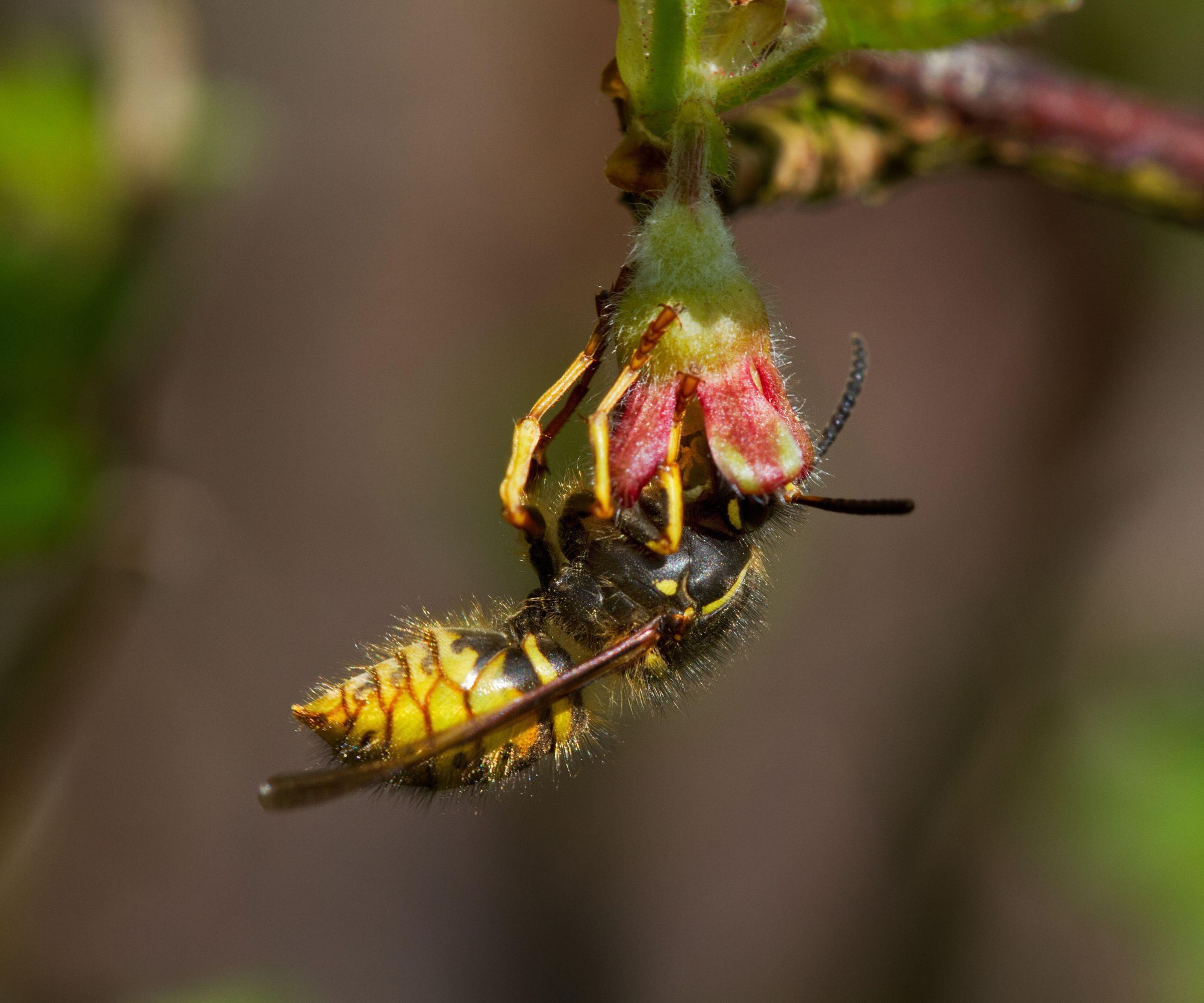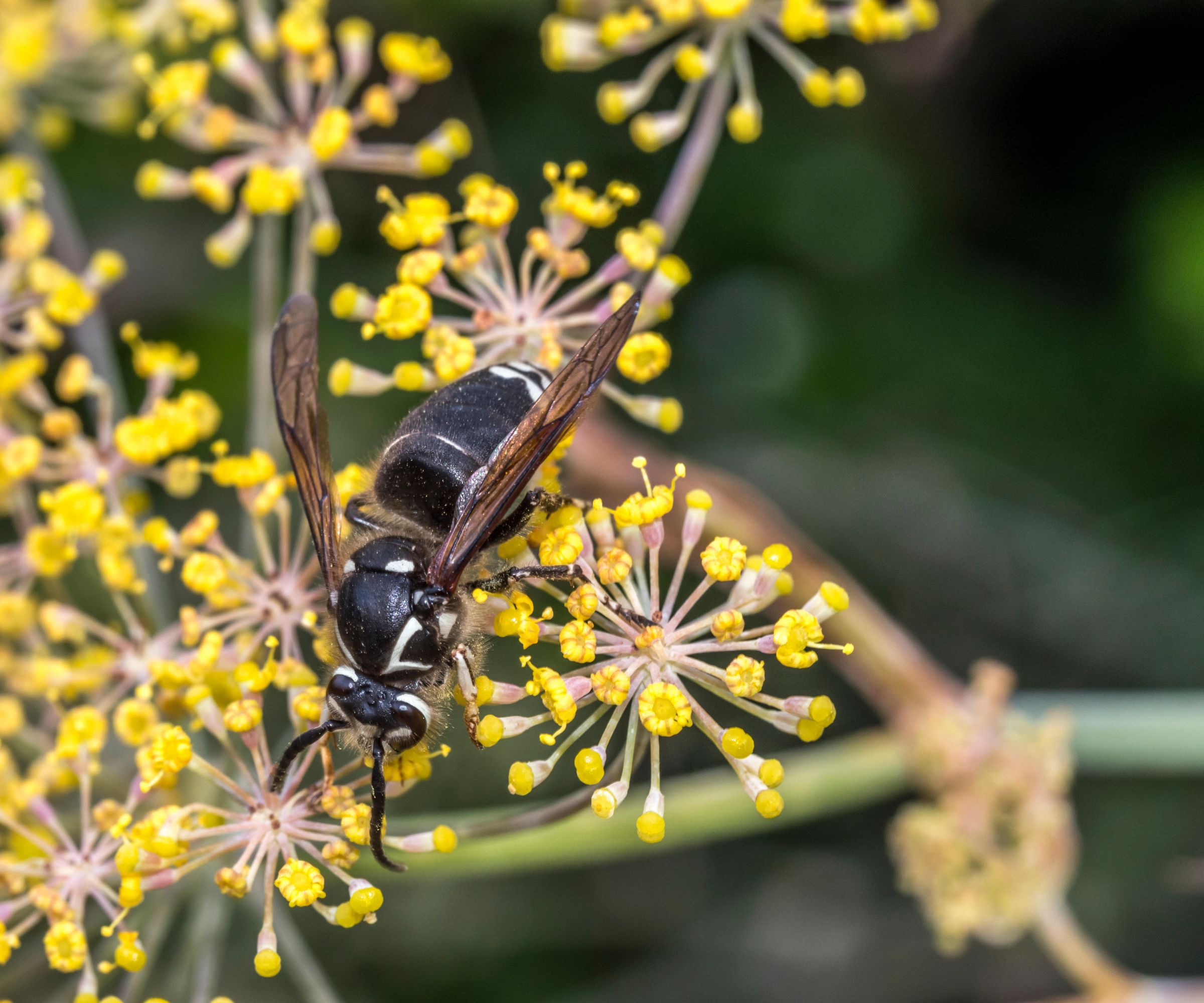How to get rid of yellowjackets – from your yard and your home
Learn how to get rid of yellowjackets from your yard and your house and how to prevent them with this expert advice


Yellowjackets are one of the most unwelcome pests in any yard, more so if they encroach on your home, so learning how to get rid of yellowjackets safely and quickly is a must if they set up a home on your property.
Unlike getting rid of flying ants or getting rid of gnats, yellowjackets can deliver very painful stings that can lead to complications in some people so, while attempting to get rid of yellowjackets yourself is possible, calling a professional is always recommended if you are vulnerable such as elderly or suffer allergies, or are unsure about removing these insects yourself.
Here, we have gathered expert recommendations for attempting to get rid of yellowjackets and how to prevent yellowjacket so you can begin to tackle a yellowjacket problem before it becomes too serious.
How to get rid of yellowjackets
'The first thing to do when you think you are dealing with yellowjackets is to positively identify these insects as the cause of your problem,' says Rachel Crow, garden editor for Homes & Gardens. 'Yellowjackets are a type of wasp but can be distinguished by their highly aggressive nature, sometimes stinging unprovoked, despite looking much like regular wasps and hornets.'
'Before you begin to tackle a yellowjackets infestation, you need to have a plan,' Rachel warns. 'These highly volatile bugs are not something you can quickly get rid of with few precautions in place, much like getting rid of wasps generally.'
How to get rid of a yellowjacket infestation

1. Locate the nest
Locating a yellowjacket nest can be relatively easy outside. These wasp-type insects are very active during the day, so following a yellowjacket at a distance should lead you back to their nesting hole relatively quickly. It is worth noting that these bugs typically form their nests within tall structures such as trees and rotting wood, or under the ground. It may even be in your house's roof pitches or eaves.
Inside the home, yellowjacket nests may be in your attic, or if you are particularly unlucky, they may have found space inside your wall cavities.
Design expertise in your inbox – from inspiring decorating ideas and beautiful celebrity homes to practical gardening advice and shopping round-ups.
'Once you have located the nest, tracking the entry points is the next most important step,' Rachel says. 'Simply observing the yellowjackets, again from a safe distance or wearing protective gear, should be enough for you to establish the entrance holes - there may be more than one.'
2. Cover the entrances to the nest
Covering the entrances and exits of a nest is a controversial tip when trying to get rid of yellow jackets and other ground-dwelling insects such as getting rid of ground bees. While some professions say this will only anger the yellowjackets into finding an alternative way out, others say it is the ideal method for dealing with yellowjackets indirectly.
If trying this method, cover the yellowjacket entrances with a glass bowl at night when they are not as active. This method works best if the nest has been located underground. Ensure there is no gap between the bowl and the ground by piling sand around the outside rim - Yellow jackets are able to find the smallest of holes to escape in and out of. Weigh down the bowl and allow it to sit for a week or more undisturbed to cut the nest off and starve the yellowjackets.
Although this method has varying success rates, it is an ideal option for pairing with other control measures if the hive has more than one entrance. Block all entrances but one with a bowl to prevent yellowjackets from escaping elsewhere when attempting other extermination techniques.
3. Dump dry Ice
'Dry ice can be hard to get a hold of in some places, but it is a fast, non-toxic option for those seeking to use natural methods of removing yellowjackets,' Rachel says.
Dry ice kills yellowjackets and many other pests on contact and again works best for nests underground. Dump finely broken up dry ice into the entrance of a yellowjacket nests and quickly cover the hole with dirt or a bowl with a tight seal.
Although this method is fast, it does require close contact with the nest which could result in stings.
4. Consider commercial killers
'There are multiple commercial pesticides and insect killers on the market that are some of the best options when it comes to pest control,' says Rachel. 'Using purpose made products is one of the only ways to ensure the job is done properly first time.'
There are multiple types of conventional treatments from dusts that can be applied directly to the nest and drenching which involves soaking the nest with a chemical pesticide - both of which will continue to work for weeks after the first application.
Alternatively, commercial bait and traps save you time and hassle when trying to remove yellowjackets, and are sure to have the right products and quantities.
5. Construct a bait trap
If buying a commercial trap is something you want to avoid, it is possible to make your own protein trap with things around your home.
Fill a five gallon bucket with warm, soapy water, and hang a protein bait such as tinned fish, liver, or chicken a few inches above the surface. It is important that the bait has a strong smell to attract the yellowjackets to it. They will be attracted to the food but likely slip and drown in the water below.
This method is great to use alongside other control methods but may not be 100% effective on its own due to the time it will take to kill all the yellowjackets. What's more, this solution only deals with worker yellowjackets and not the queen, os more pests may be produced in the nest itself.
6. Destroy the nest
'By far the most direct and risky approach would be to destroy the yellowjacket nest while there are yellowjackets inside of it,' says Rachel, 'While this is not recommended, it may be carried out with the correct clothing and equipment.'
For a ground nest, wait until nightfall, when most yellowjackets will be less active, before pouring a half and half mixture of peppermint castile soap and water into the nests opening, following with a large amount of boiling water. It is important to wear heavy-duty clothing with long sleeves and trousers, with closed shoes, head protection and thick gloves when doing this as yellowjackets will swarm.
After a few days of no activity, dig the nest out and dispose of it, removing any yellowjacket bodies too.
For an aerial nest, slip a thick drawstring bag around the nest completely and close it fully. Twist the nest so that it breaks free from the tree before fully submerging the bag and nest in hot water, weighing it down with a brick or log to hold it under for a few hours to ensure all yellowjackets are dead.
7. Call a professional
As is the case with any pest infestation, calling a professional is the best way to get rid of an infestation properly and safely. A professional will be able to use methods not readily available to untrained homeowners, as well as access high quality safety equipment to limit the risk of injury.
How to prevent yellowjackets

1. Prevent yellowjackets with peppermint oil
'Peppermint oil is a highly effective and versatile essential oil when it comes to pest control. Its uses range from getting rid of mice, getting rid of lawn grubs, and getting rid of lizards, its uses are almost endless,' Rachel says.
Add a few drops of peppermint oil to a few tablespoons of dish soap and mix into a spray bottle of warm water. Spray the mixture around your property where yellowjackets are likely to nest to prevent them from settling in the area.
This mix can also be used to dissuade yellowjackets from returning to an established nest too.
2. Limit food sources
Getting rid of a creature's food source will discourage them from setting up a permanent residence on your property. 'Cover outdoor garbage bins, clean up outdoor spills, and keep pet food inside,' Rachel suggests. 'Pick fruit from your vegetable garden ideas as soon as they are ripe, or cover them to prevent yellowjackets feeding from them, and treat other pest infestations in your yard to rid them of their protein source.'
3. Hang an imitation nest
'Yellowjackets, like hornets, are incredibly territorial and will not set up a home where they think other yellowjackets already exist,' advises Rachel, 'hanging an imitation nest or two will dissuade yellowjackets from setting up another nest near by.'
4. clean up your garden
Yellowjackets, like many other pests, thrive in gardens that are unkept and provide excellent shelter opportunities. Get rid of rotting wood and piles of rubbish and leaves in your yard to make your yard less appealing to these dangerous insects.
When cleaning up your garden, consider also planting some of the best wasp repellent plants to help dissuade yellowjackets and their insect cousins in the long term without affecting helpful bees.
Maintaining a manicured yard will also help in getting rid of moles and getting rid of termites.
How do I get rid of yellowjackets when I can't find the nest
If you cannot find the source of your yellowjacket problem, set up a food bait trap. Yellowjackets will collect the food and allow you to carefully follow them back to their hive location.
Be careful to not disturb the hive once you have found it, however, as a disturbed colony is likely to become defensive and attack.
Do yellowjacket nests have two entrances?
As with other swarming insects, yellowjacket nests may have more than one entrance meaning blocking or spraying killers down one hole could force angry yellowjackets out of another hole to defend their space. If the nest is in your home, forcing the yellowjackets out of their nest from a new hole or a less used hole may cause further damage to your property too.

Chiana has been at Homes & Gardens for two years and is our resident 'queen' of non-toxic living. She spends most of her time producing content for the Solved section of the website, helping readers get the most out of their homes through clever decluttering, cleaning, and tidying tips. She was named one of Fixr's top home improvement journalists in 2024.